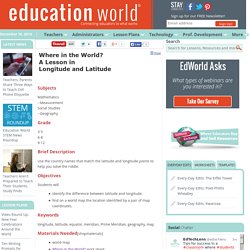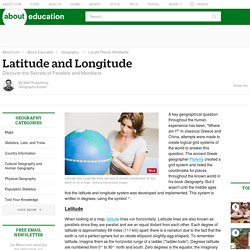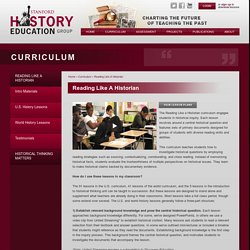

MapStory. StatSilk. MyHistro. Historypin. Timeline. Timeline allows students to create a graphical representation of an event or process by displaying items sequentially along a line.

Timelines can be organized by time of day, date, or event, and the tool allows users to create a label with short or long descriptive text. Adding an image for each label makes a timeline more visually appealing. Add, drag, and rearrange items as needed. Saving capability allows students to return to their work and make revisions, and they can share their final work via e-mail. For additional ideas on how to use this tool outside of the classroom, see Timeline in the Parent & Afterschool Resources section. Related Classroom & Professional Development Resources back to top Grades 11 – 12 | Lesson Plan | Standard Lesson A Blast from the Past with Nuclear Chemistry Grades 6 – 8 | Lesson Plan | Standard Lesson Timelines and Texts: Motivating Students to Read Nonfiction Grades 3 – 12 | Student Interactive | Organizing & Summarizing Graphic Map Plot Diagram Timeline.
World Data Finder. A Lesson in Longitude and Latitude. Subjects Mathematics --Measurement Social Studies --Geography Grade Brief Description Use the country names that match the latitude and longitude points to help you solve the riddle.

Objectives Students will identify the difference between latitude and longitude. Keywords longitude, latitude, equator, meridian, Prime Meridian, geography, map Materials Needed[shopmaterials] world map Where in the World? Lesson Plan Write on a board or a sheet of chart paper the terms latitude and longitude. Explain that the lines of latitude and longitude (see sidebar for tricks to help students remember the difference) comprise an imaginary grid that has been placed over the globe.
The lines that run across the grid -- the flat lines -- are lines of latitude. Help students further understand the concepts by giving them some hands-on practice. If you are not sure of the coordinates, you can use this tool, the Latitude and Longitude Finder, to find your local coordinates. Learn Latitude and Longitude - Information. A key geographical question throughout the human experience has been, "Where am I?

" In classical Greece and China, attempts were made to create logical grid systems of the world to answer this question. The ancient Greek geographer Ptolemy created a grid system and listed the coordinates for places throughout the known world in his book Geography. But it wasn't until the middle ages that the latitude and longitude system was developed and implemented. This system is written in degrees, using the symbol °. Latitude When looking at a map, latitude lines run horizontally. Longitude The vertical longitude lines are also known as meridians. How Latitude and Longitude Work Together To precisely locate points on the earth's surface, degrees longitude and latitude have been divided into minutes (') and seconds ("). To locate the latitude and longitude of a specific place on earth, see my Locate Places Worldwide collection of resources. LatLong Earth. Games. SOCIAL STUDIES - General.
SOCIAL STUDIES - World History. SOCIAL STUDIES - Economics. Historical Thinking Matters: home page. Reading Like A Historian. The Reading Like a Historian curriculum engages students in historical inquiry.

Each lesson revolves around a central historical question and features sets of primary documents designed for groups of students with diverse reading skills and abilities. This curriculum teaches students how to investigate historical questions by employing reading strategies such as sourcing, contextualizing, corroborating, and close reading. Instead of memorizing historical facts, students evaluate the trustworthiness of multiple perspectives on historical issues. They learn to make historical claims backed by documentary evidence. How do I use these lessons in my classroom? The 91 lessons in the U.S. curriculum, 41 lessons of the world curriculum, and the 5 lessons in the introduction to historical thinking unit can be taught in succession. 1) Establish relevant background knowledge and pose the central historical question. *Note: United Streaming requires a subscription to Discovery Education. Of course! Crash Course: World History on YouTube.